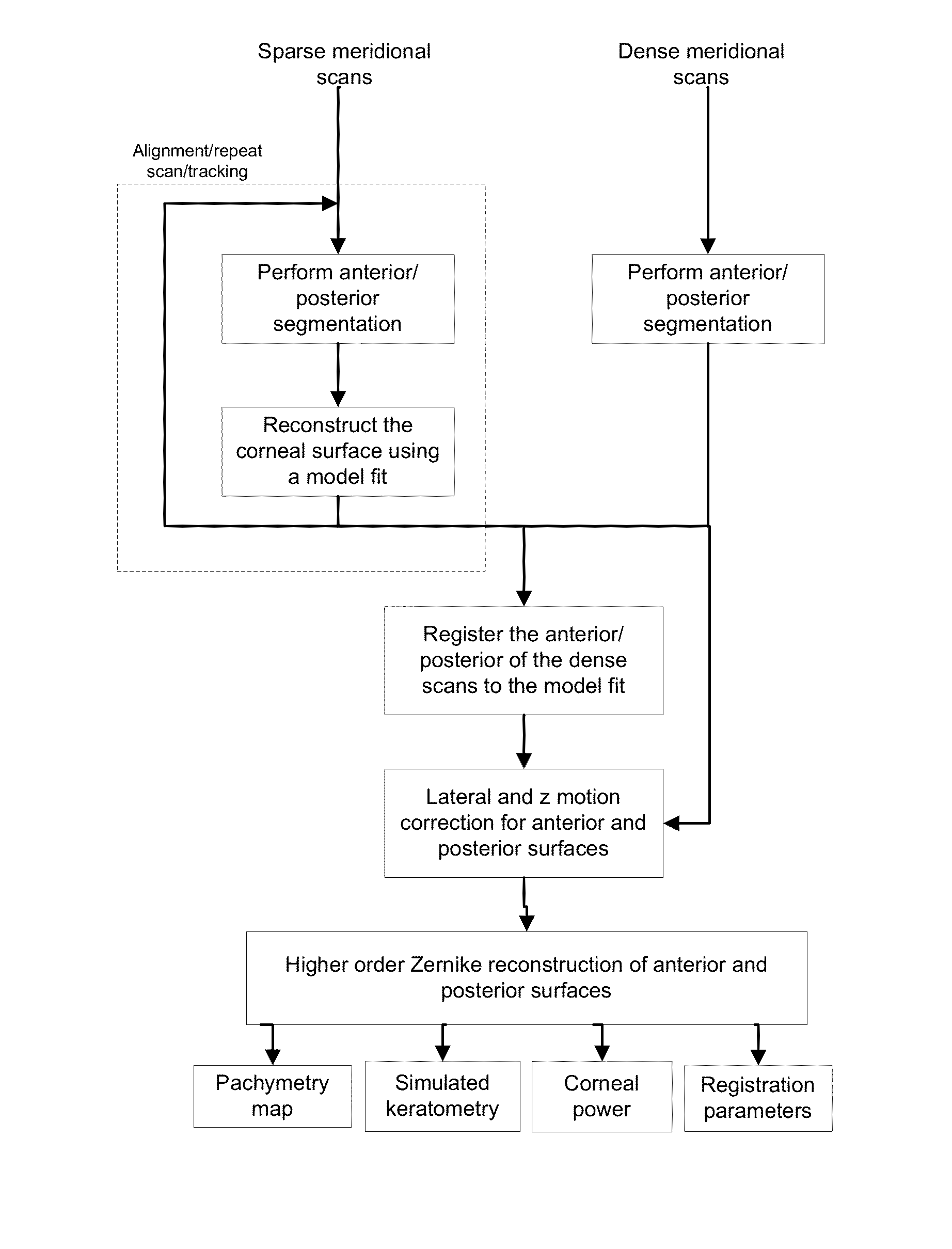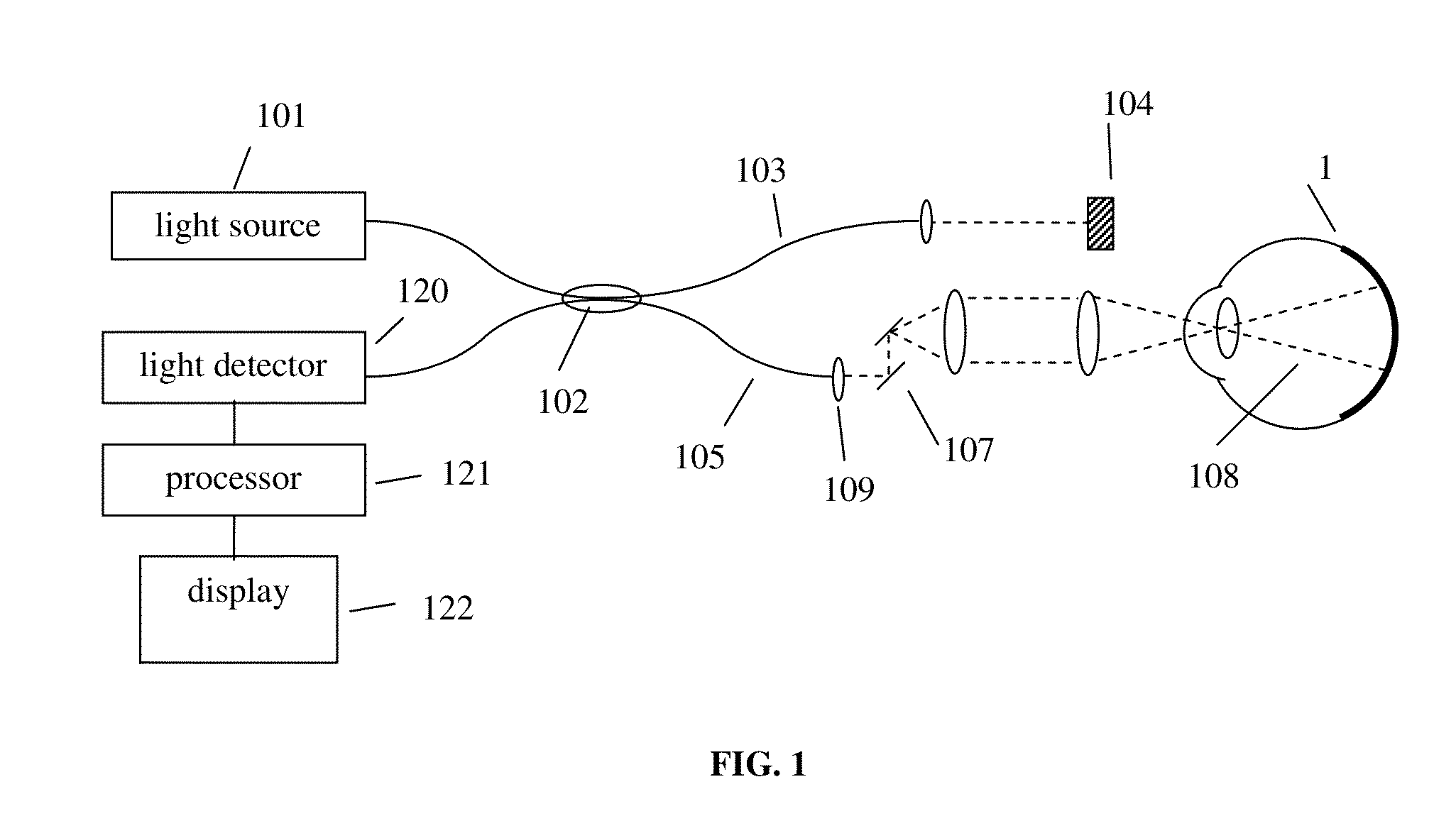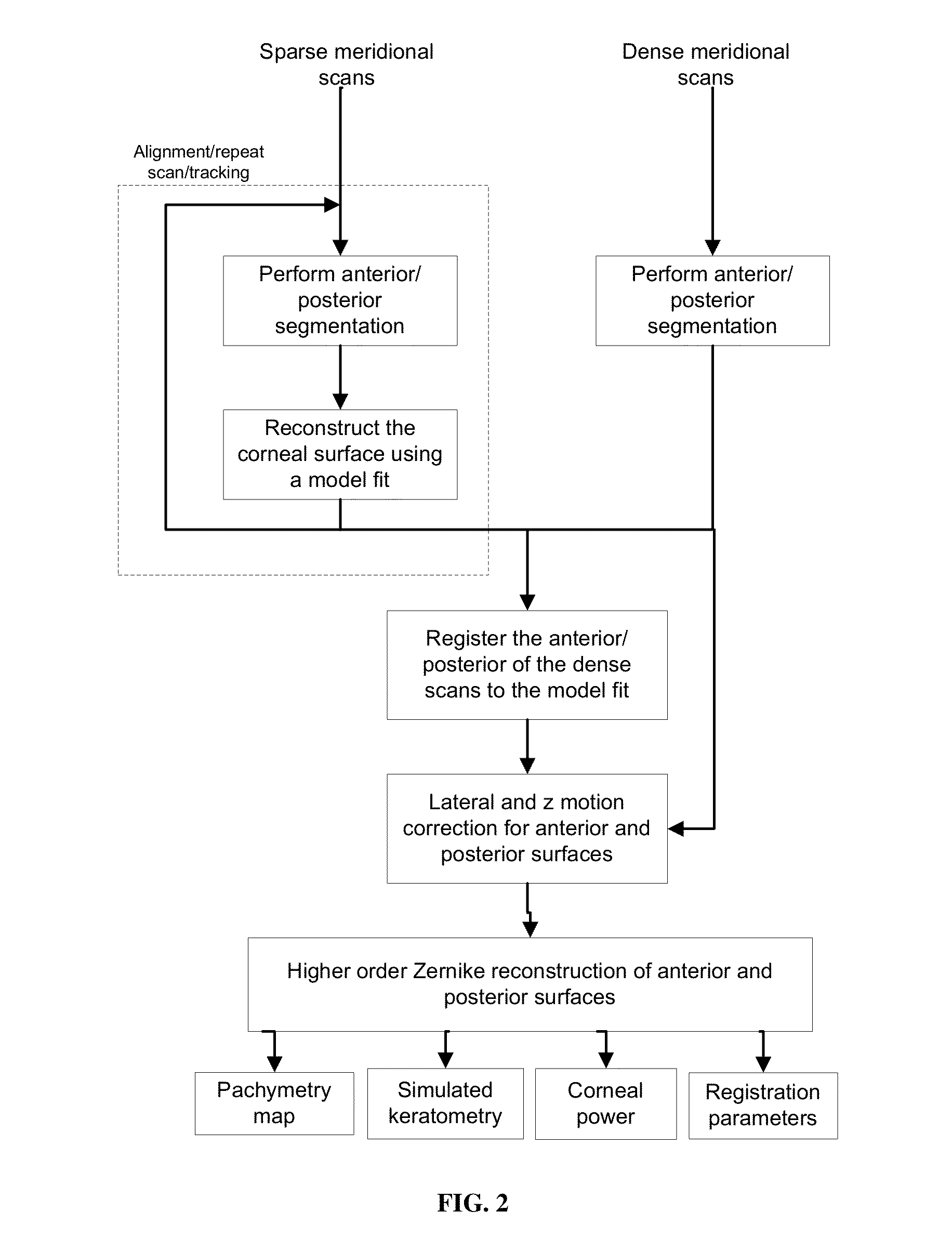Systems and methods for enhanced accuracy in OCT imaging of the cornea
a technology of oct imaging and enhanced accuracy, applied in the field of medical imaging, can solve the problems of data being more susceptible to eye motion, longer scan time, and limited accuracy of oct for a number of ophthalmic applications, and achieve the effect of enhancing the accuracy in the calculation of ocular measurements
- Summary
- Abstract
- Description
- Claims
- Application Information
AI Technical Summary
Benefits of technology
Problems solved by technology
Method used
Image
Examples
Embodiment Construction
[0038]A diagram of a generalized frequency-domain OCT (FD-OCT) system for use in ophthalmology is shown in FIG. 1. Light from source 101 is routed, typically by optical fiber 105, to illuminate the sample 110, a typical sample being tissue in the human eye. Typical sources are a broadband light source with short temporal coherence length in the case of spectral-domain OCT (SD-OCT), or a wavelength-tunable laser source in the case of swept-source OCT (SS-OCT). The beam of light (dashed line 108) is scanned laterally (in x and y, if z is parallel to the beam of light) over the area or volume to be imaged, typically with scanning optics 107 between the output of the fiber and the sample. Light backreflected from the sample returns through scanning optics 107 and is collected, typically into the same fiber 105 used to route the light for sample illumination. Lens 109 is used to collimate the illuminating light exiting the fiber and to focus the reflected light back into the fiber for co...
PUM
 Login to View More
Login to View More Abstract
Description
Claims
Application Information
 Login to View More
Login to View More - R&D
- Intellectual Property
- Life Sciences
- Materials
- Tech Scout
- Unparalleled Data Quality
- Higher Quality Content
- 60% Fewer Hallucinations
Browse by: Latest US Patents, China's latest patents, Technical Efficacy Thesaurus, Application Domain, Technology Topic, Popular Technical Reports.
© 2025 PatSnap. All rights reserved.Legal|Privacy policy|Modern Slavery Act Transparency Statement|Sitemap|About US| Contact US: help@patsnap.com



